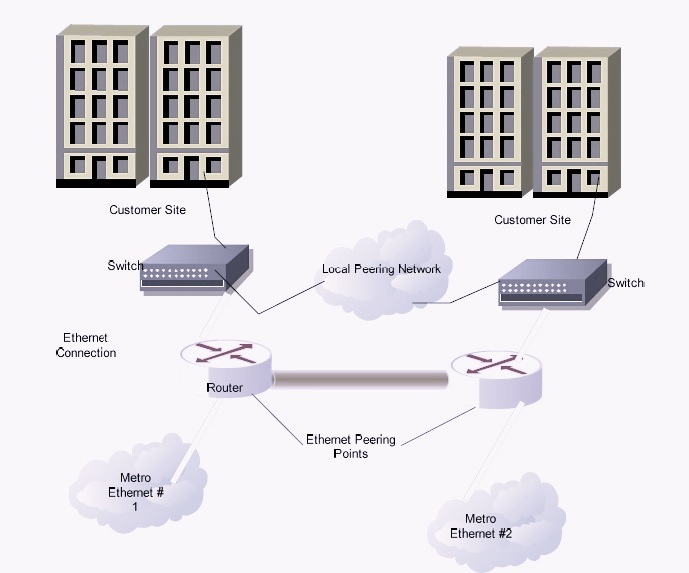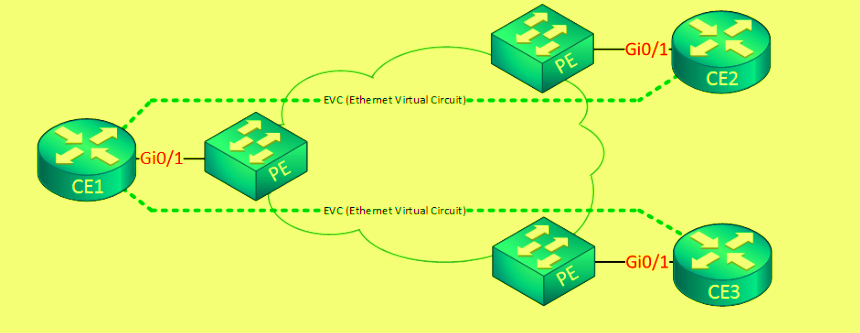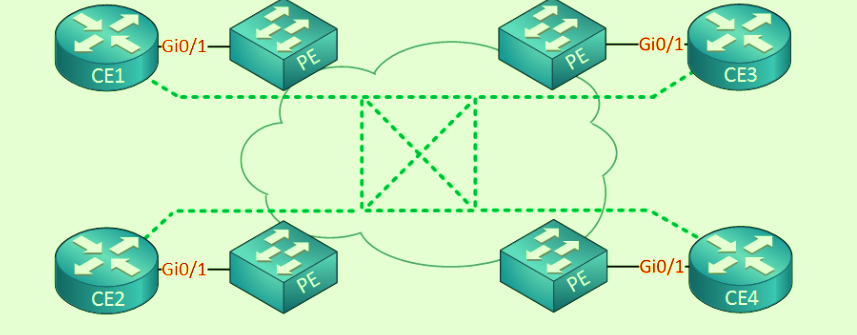Table of Contents
Metro Ethernet Network Services and Architecture
This metro ethernet network services-based tutorial will be helpful to computer science graduates in understanding the concepts of metro ethernet network and its services. Different metro ethernet standards and topologies are also explained in this tutorial.
Frequently Asked Questions
After reading this tutorial, computer science graduates will able to answer the following questions and understand the following concepts.
- What is Ethernet?
- What is metro ethernet ?
- What are the different standards of metro ethernet ?
- What is the system design of Metro Ethernet?
- What is the bandwidth of each type of Metro Ethernet standard?
- What are the benefits or advantages of using the Metro Ethernet?
- Different services of Metro Ethernet.
- What do you understand by E-Line?
- What is E-LAN?
- What is Ethernet Tree?
Metro Ethernet Network Introduction
Ethernet was designed and developed for the Local Area Network ( LAN). Distance is an important factor due to which Ethernet is generally not suitable for Wide Area Network ( WAN).
Ethernet technology is now used in many networking products nowadays. Ethernet technology is cheap as compared to other networking technology.
The cost of Ethernet is a prime factor that makes it popular for use outside the Local Area Network.
Ethernet, which is used outside the local area network, is known as the Metro Ethernet. Metro Ethernet was first used outside of the Local Area Network in metropolitan areas, also known as Metropolitan Area Network.
The main features of metro Ethernet network is that fiber cabling is used because fire cabling support longer distances.
Different standard of Metro Ethernet is shown in the following table.
| NAME | DISTANCE | BANDWIDTH |
| 100Base-LX10 | 10 Km | 100 Mbps |
| 1000Base-LX | 5 Km | 1 Gbps |
| 1000Base-LX10 | 10 Km | 1 Gbps |
| 1000Base-ZX | 100 Km | 1 Gbps |
| 10Gbase-LR | 10 Km | 10 Gbps |
| 10Gbase-ER | 40 Km | 10 Gbps |
| 40Gbase-LR4 | 10 Km | 40 Gbps |
| 100Gbase-ER4 | 40 Km | 100 Gbps |
| 100Base-LX10 | 10 Km | 100 Mbps |
As shown in the above table, 1000Base–Zx can cover a 100 km distance, and Its capacity is up to 100gbps. After Metropolitan Area Network metro Ethernet is also used in Wide Area Network.
The metro Ethernet was first only used in metropolitan areas, known as MetroPolitan area networks. The metro Ethernet used for Wide Area Network is known as Carrier Ethernet.
Advantages of Metro Ethernet Network
There are the following advantages of Metro Ethernet Network.
1.Easy to Use
Metro Ethernet Network services are generally obtained through a standard available across the world and a well-understood Ethernet interface.
Logically most of the networking equipment and hosts connect to the network through Ethernet. This makes the device operation simple and provides administration, management, and provisioning.
2.Cost Effectiveness
Cost-effectiveness is another major advantage of using the Metro Ethernet. Metro Ethernet services help reduce subscribers’ capital expense as well as operating expenses in three ways:
- Its broad usage in almost all networking devices and the Ethernet Interface itself is not so much expensive.
- Metro Ethernet services can often cost less than competing services due to lower equipment, service, and operational costs.
- Many Metro Ethernet services also allow subscribers so that they can add more bandwidth.
3.Flexibility
Metro Ethernet Network service is more flexible. Flexibility is another important advantage of using Metro Ethernet. Metro Ethernet service provides higher capacity options at a lower cost of ownership to the customers.
Metro Ethernet provides an improved operating margin, and it also reduced operational complexity. Making additional changes is also easy without time-consuming and less expensive.
Metro Ethernet offers flexible, scalable, and cost Effectiveness to private lines, frame relay, and ATM connectivity solutions for Wide Area Network.
Metro Ethernet Architecture
Metro Ethernet Architecture is as shown in the following figure.

The connectivity between the metro network and the customer’s site is as shown in the figure. As we can in the architecture diagram, two areas are connected using switches and routers. Cost-effectiveness, reliability, and availability are modeled and simulated in the above diagram.
Metro Ethernet Services and Topologies
There are the following types of services provided by Metro Ethernet. Each service offers a different topology.
These services are as following
-
Ethernet Line Service(E- Line Service )
The Ethernet Line Service is a simple form of Metro Ethernet service. It provides a point-to-point connection between two sites, as shown in the following figure.
.

If we talk about the consumer perspective, then From the customer’s perspective E Line Service of Metro Ethernet is just like connecting two routers through a crossover cable.
It supports two link-layer systems, so routers will belong to the same subnet if we configure IP addresses. The point-to-point link is also known as Ethernet Virtual Circuit (EVC).

In case of multiple sites we can use multiple E-lines with a single physical interface.
If we want to use multiple E-lines with a single physical interface then we have to use 802.1Q trunking and VLAN for every E-line.
If the service provider uses MPLS on their network then in this case E-Line is also known as Virtual Private Wire Service. This is a case of transporting Ethernet over the MPLS network.
2. E-LAN (Ethernet LAN Service)
Suppose we have lot of sites and we want that each site can send frames directly to any other site then for that purpose we have to use an Ethernet LAN Service. E-LAN is based of full-mesh topology and it acts like a big switch.

As shown in above figure the green line represents a single EVC that connects all four sites together is creating one E-LAN. Here All sites are able to reach each other directly.
E-LAN is also known as Virtual Private LAN Service
3.Ethernet Tree Service
The third topology that supported the Metro Ethernet is the E-Tree topology; this topology is very useful when we have a central site and some other sites required to access resources from the central site.

There is a root with leaves topology in this type of topology, as shown in the above figure. Here CE1 is the root of the tree, and CE2/CE3 is the leaves of the tree.
Eye metro ethernet is also known as a hub and spoke topology or partial mesh or point-to-multipoint topology. Communication can be done from left to leave, but it should be through the main site.
Conclusion and Summary
Metro Ethernet Networks is a future technology that can create wonders in networking field. In this tutorial we have discussed the various aspects of Metro Ethernet Networks including it’s services and architecture.
Please provide your feedback or leave a comment to improve and provide you a good quality tutorials.
If you find this Metro Ethernet Network Tutorial useful, then please Like and Share the post on Facebook, Twitter, LinkedIn through their icons as given below.
Related Posts – Computer Networks Tutorials


